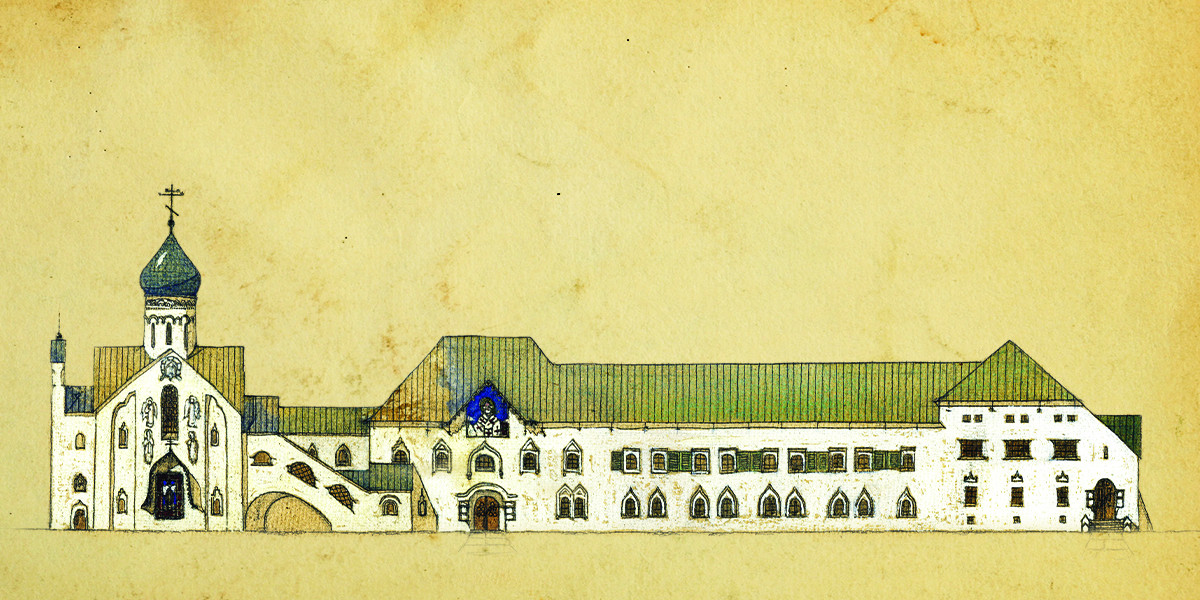Italian works of Alexei Schusev
Curators: Marianna Evstratova, Sergei Koluzakov
Alexei Schusev is an outstanding architect of the 20th century, author of Marfo-Mariinsky Convent, Kazansky railway terminal, Lenin's Mausoleum, Hotel Moskva, one of the authors of "Stalin’s Moscow Master Plan", founder of the Museum of Russian architecture. The famous Russian architect has left a great legacy outside his own Homeland. Traveling around Italy, visiting Rome, Naples, Palermo, Venice, Padua, Vicenza, Verona and Florence several times, he studied and sketched numerous architectural monuments. During the 1910's, on the eve of World War I and in the run-up to the Russian Revolution, Schusev managed to construct two remarkable buildings in Italy: The St. Nicholas Church and Russian courtyard in Bari, built by Imperial Orthodox Palestinian Society (IOPS) under patronage of Grand Duchess Elizabeth Feodorovna, the second Chairman of IOPS, and Russian Pavilion in Venice. Schusev project of the Cathedral of Christ the Saviour in San Remo was left unrealized. Russian courtyard in Bari was designed by request of IOPS as a large pilgrim center for the needs of Russian pilgrims coming to Bari to bow to relics of Saint Nicholas. The Russian Pavilion in Venice was created in 1913-1914 as a constant exhibition space for Russian Empire during the well-known international Venice Biennials.
Both projects were treated by the architect in modern - Russian - style, as they had to represent the Russian Empire abroad, display the identity of culture and power of the country. Both of them were patronized personally by the emperor Nicholas II and members of the imperial family. Schusev then wrote: "If we peer into art of Italy itself, we see that it is full of the fanciest conglomerates of architecture. Every era invested its best in the general treasury of art, aspiring either to a magnificent ensemble, as in St. Peter’s Square in Rome, or to a conglomerate, as in St. Mark's Square in Venice. The choice was free and provided to the actor, the artist, the builder who interwove an excess link into the general golden chain". More than 100 graphic works by Schusev from the collection of State Museum of Architecture and private collections are presented in this exhibition. Most of them are displayed for the first time and reveal the birth of an author's plan, from initial sketches to presentation drawings and photos. Interior design and subject design drawings worthy of special attention. Besides the carried-out works, visitors may see the unknown outline sketch by Schusev for the San Remo cathedral which was subsequently built according to drawings of the Italian architect Pietro Agosti. The works in thr exhibition allow to look at the poorly studied pre-revolutionary creative period of the outstanding master in a new way.
